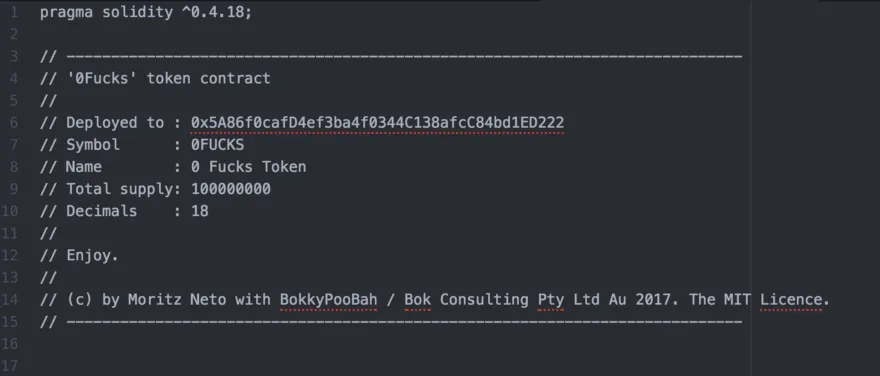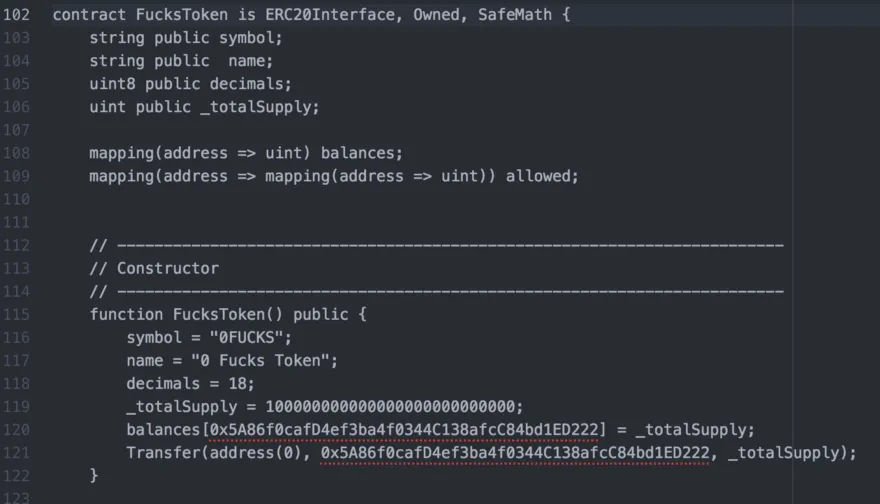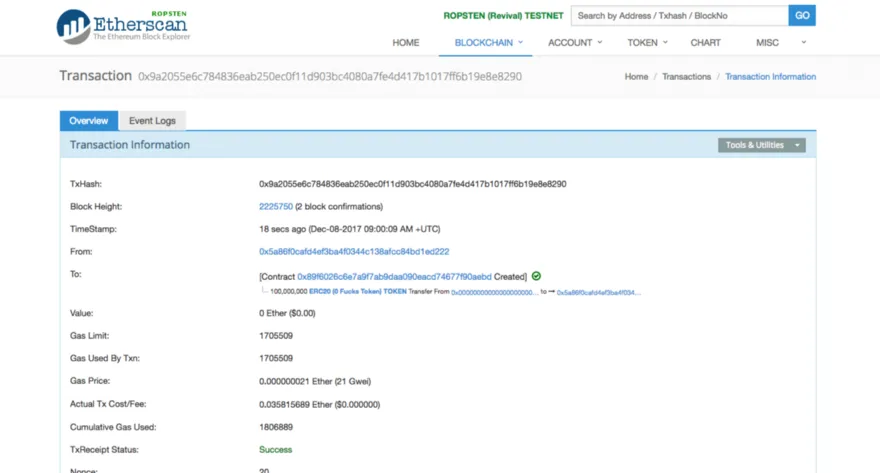Are you ready to take control of your finances and join the cryptocurrency market? With just 5 easy steps, you can create your own digital token and start trading on the crypto market! Whether you are a novice or an experienced investor, it has never been easier to issue your own crypto token. In this article, you will discover how to set up a cryptocurrency wallet, design your token and deploy it onto the Ethereum blockchain. So, what are you waiting for? Take the plunge and learn how to create your own crypto token today!
Table Of Contents
Introduction
The crypto market has been experiencing an unprecedented surge in popularity and growth over the past few years, thanks to the disruptive potential of blockchain technology. This new form of decentralized digital currency offers users a way to create value without relying on traditional financial institutions or government-backed currencies. As a result, issuing your own cryptocurrency token has become an attractive option for people looking to join the lucrative world of digital currencies.
However, the process of creating a token isn’t always straightforward. It involves multiple steps, such as setting up a wallet address, deciding a token name and symbol, establishing total supply and decimals, setting up an Ethereum contract, and deploying the token. Fortunately, this article provides step-by-step instructions on how to issue your own crypto token in just five simple steps. With these steps, users will be able to issue their own crypto token and begin trading on the crypto market. So if you’re interested in learning more about this dynamic process, read on!

Step 1: Setting Up a Wallet Address
- Create a new Ethereum account. To do this, you will need a wallet, such as Metamask, and you will need to buy some Ether to fund the account.
- Once you have enough Ether, you will need to use a tool such as Remix, or Truffle, to create your smart contract.
- After the smart contract is created, you will need to deploy it to the Ethereum network.
- Once the smart contract is deployed, you will need to set the address of the contract. This can be done with a tool such as MyEtherWallet or EtherScan.
- Once the address is set, you will need to create your own crypto token. This can be done with a tool such as ERC20 Token Factory.
Step 2: Deciding a Token Name and Symbol
A token name and symbol is a crucial part of creating your own cryptocurrency token. Choosing the right token name and symbol for your cryptocurrency is an important step in setting up your own crypto token, as it will be used by exchanges and traders when trading and transferring tokens among themselves. When selecting a meaningful token name and symbol for your cryptocurrency, it’s important to consider how easy it will be to remember, how well it stands out from other tokens on the market, what its purpose is, and more.
When choosing a token name, you should ideally opt for something unique yet easy to remember. The name should reflect the purpose of the coin and communicate the value of investing in it. Additionally, it should be easy to spell and simple enough to fit within the length restrictions set by exchanges. It is also important to consider how well the name would stand out from other tokens on the market – that is, would potential buyers easily recognize yours amongst others?
The symbol used to represent your token should also be short and simple enough to remember while also conveying the purpose of your token. For instance, if you are creating a blockchain-based platform for streaming music, you might want to use an ‘M’ or ‘S’ for Music or Streaming. Symbols should also avoid any similarity with existing currency symbols as this could lead to confusion. You can use online tools such as CryptoCurrency Icons or Cryptoicon Finder to help you find a suitable symbol for your token.
After selecting a meaningful name and symbol that reflects the purpose of your token, you then need to register them with Ethereum’s ERC-20 standard so that traders can easily identify it on exchanges. Furthermore, you must also ensure that your chosen name and symbol follow all applicable regulations in order to successfully launch your own cryptocurrency token.
In conclusion, deciding on a token name and symbol is an invaluable step in issuing your own crypto token. It is vital that you select names and symbols that clearly communicate the purpose of your coin as well as stand out from other tokens on the market. Additionally, make sure that they follow all applicable regulations prior to registering them with Ethereum’s ERC-20 standard. With these steps completed, you are now ready to move onto establishing total supply and decimals of your new cryptocurrency!

Step 3: Establishing Total Supply and Decimals
It is important to determine the total supply of tokens for your cryptocurrency. This will form the basis of the available trading volume in the market, and it is an essential element in deciding how successful it will be. The number of tokens you issue will depend on the size of the market you intend to target, as well as any other factors such as transaction fees or adjustments in financial regulations.
Decimals set the granularity of the token, meaning how divisible it can be. As mentioned before, most cryptocurrencies use 18 decimals as their standard setting; however, this can be adjusted if needed for unique purposes. For example, if you want to make purchasing large amounts of your token more difficult or expensive, then it can be beneficial to reduce the number of decimals used when exchanging your token.
The total supply and decimals will be added to the smart contract code before deployment. This ensures that users are able to purchase, transfer and exchange the token on the blockchain without any issues. Furthermore, it also prevents any manipulation of the token price by creating artificial scarcity or abundance on the market.
Once you have established a total supply and set up decimals for your token, it is time to move on to setting up an Ethereum contract in order to deploy your token. This is a crucial step in issuing your own cryptocurrency since it enables you to create a secure digital asset that users can trade on blockchains with confidence.
Step 4: Setting Up an Ethereum Contract
Ethereum contracts are the foundation of most crypto tokens, and setting up an Ethereum contract is an important step in the process of issuing a new token. In order to set up a contract, you will need to decide on the programming language you want to use for writing your contract code. This will vary depending on the capabilities you need from your token and should be chosen carefully. Popular languages used for writing contract code include Solidity, Python, and JavaScript.
Once you’ve written your code and made sure it is free of any errors or vulnerabilities, it needs to be deployed to the blockchain network. This can be done through various tools available online such as Truffle, Remix, or Metamask. Once your contract has been deployed, it can then be used to mint new tokens and add them to users’ wallets.
Finally, smart contracts can be used to automate some of the functions of your token such as minting or burning tokens. By using smart contracts, you can ensure that running your token remains a straightforward process without needing manual intervention every time you need to make a change or carry out a transaction. When setting up an Ethereum contract, it is important to ensure that only those who have permission can access and make changes to the contract code.
In conclusion, setting up an Ethereum contract is an essential step in creating a cryptocurrency token. It is important to choose the right programming language for writing the contract code and ensure it is deployed correctly onto the blockchain network. Additionally, smart contracts can help automate certain functions of your token which makes running it easier and more streamlined. With these five simple steps outlined in this article, you will be well on your way to Issue Your Own Crypto Token!

Step 5: Deploying the Token and Adding It to an Exchange
Deploying a token to the Ethereum network is relatively straightforward, and simply requires a series of transactions from a wallet address associated with the desired network. This wallet address is typically the same address that owns the code for the token. After deployment, the token must be added to an exchange in order for it to become tradable. In order to do so, users must have access to the corresponding wallet address which holds the token.
There are several popular exchanges that accept new tokens for trading. Popular platforms include Binance and Huobi Pro, both of which are highly liquid markets for crypto tokens. Additionally, there are smaller exchanges such as IDEX and Waves Exchange which can allow tokens to be put up for sale. Adding a token to an exchange requires a thorough understanding of its code and the exchange’s listing requirements – it’s recommended that experienced developers guide this process if possible. Furthermore, some exchanges charge listing fees while others offer free listing options – these should be explored in advance when choosing an exchange to list on.
Once a token has been successfully added to an exchange, users can begin trading it against other cryptocurrencies or fiat currencies like dollars and euros. This allows people to buy and sell their own custom tokens and provides them with an opportunity to make profits. Additionally, tokens can also be used for various purposes such as payment methods, stored value systems, or even to represent ownership in a company or asset. With these possibilities, issuing your own crypto token can be an innovative way to create value!
Creating and issuing your own crypto token is an exciting process! By following five simple steps – setting up a wallet address, deciding on a token name and symbol, establishing total supply and decimals, setting up an Ethereum contract and deploying the token – users can quickly put their tokens on an exchange and begin trading in the crypto market. With these steps, anyone can have their own unique token and partake in trading activities on supported exchanges.
Conclusion
Issuing a crypto token is an exciting journey. With the five steps outlined in this article, you are now ready to launch your own cryptocurrency token. Crypto tokens can provide numerous benefits if managed correctly and can be used to transfer value, represent real-world assets, or act as utility tokens. Although the process of issuing a crypto token is relatively complex, it can be accomplished by anyone with patience and determination. It is important to understand the key elements needed to get started, such as the wallet address, the token name, the total supply, the number of decimals, and the coin symbol. Additionally, it is necessary to know how to set up an Ethereum contract, deploy the token and add it to an exchange. With these considerations in mind, users can successfully issue their own crypto token and begin trading on the market.
In conclusion, with just five simple steps, anyone can issue their own crypto token and join the world of cryptocurrency trading! You’ll need to set up a wallet address, decide a token name and symbol, establish the total supply and decimals, set up an Ethereum contract and deploy the token. Once your token is deployed, you’ll be able to include it in an exchange, allowing others to buy and sell it. With these five steps, you’ll be able to trade your own crypto token in no time!
FAQ
What is cryptocurrency in simple words?
Cryptocurrency is a form of digital currency that uses cryptography for security and is not controlled by any central bank or government. It is decentralized and can be used as a medium of exchange for goods and services.
Can I create my own cryptocurrency token?
Yes, you can create your own cryptocurrency token. There are several platforms available which enable users to create their own tokens, such as Ethereum, NEO, Cardano, and Waves. Depending on the platform, you may need to be familiar with coding languages such as Solidity or Java. Additionally, each platform has its own set of rules and regulations, so be sure to read up on those before getting started.
How do I issue crypto tokens?
Issuing a crypto token is a multi-step process that involves creating the token, launching it on a blockchain network, and distributing it to investors. The first step is to create the token by writing a smart contract using a blockchain programming language such as Solidity. Once the token has been created, it must be uploaded to a blockchain network such as Ethereum. Finally, the token must be distributed to investors, typically through an Initial Coin Offering (ICO).
How much does it cost to make your own crypto token?
The cost of creating your own cryptocurrency token can vary widely depending on a number of factors, such as the type of cryptocurrency you are creating, the development costs, the marketing and promotion of the token, and other associated costs. Generally, these costs can range from a few hundred dollars to several thousand dollars.
Can anyone issue cryptocurrency?
In general, anyone can issue a cryptocurrency. However, in order to do so legally, you must meet all relevant laws and regulations in the countries you are operating in, as well as obtain any required licenses or other permission. Additionally, it is important to consider the technical and financial resources that may be required to launch and maintain a successful cryptocurrency.
What is a crypto token?
A crypto token is a digital asset that is built on top of an existing blockchain network. It is used to represent a fungible and tradable asset or a utility. Tokens can represent anything from physical assets like gold or real estate, to digital services like cloud storage or streaming services. They are often used to raise capital in Initial Coin Offerings (ICOs) and to fuel decentralized applications (dApps).
How to choose a developer to create a cryptocurrency?
1. Research their portfolio and reviews: Start by researching the portfolio and reviews of potential developers. Look for developers who have extensive experience and have a good track record of creating successful cryptocurrencies.
2. Check their credentials: Make sure to check the credentials of the developer. Check to see if they have any certifications or qualifications related to blockchain development.
3. Check their experience: Look for developers who have experience in developing cryptocurrencies. Ask them questions about the technologies they have used and the projects they have worked on.
4. Understand their process: Make sure to understand the process that the developer will use to create the cryptocurrency. Ask them how long it will take and how involved you will be in the process.
5. Compare prices: Compare the prices of different developers to ensure you are getting the best value for your money.
6. Ask for references: Ask the developer for references from previous clients. Speak to these clients to get an idea of their experience with the developer.

